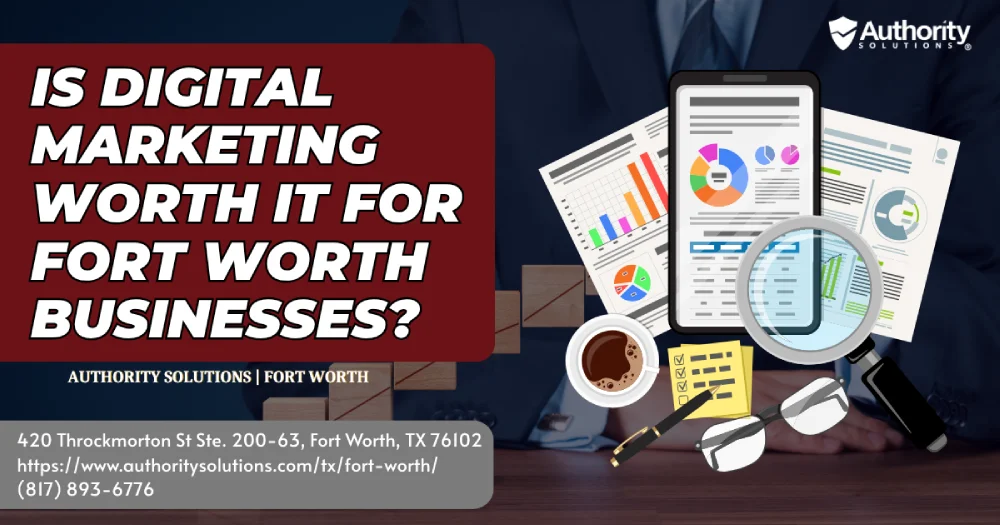What Are the Key Elements That Make A Website Effective And User-Friendly?
A website serves as a digital storefront, shaping how visitors perceive a business within seconds. If the design is cluttered, unresponsive, or visually unappealing, potential customers may leave before exploring its content. First impressions matter, and a well-designed website creates a sense of professionalism, credibility, and engagement. Beyond aesthetics, functionality plays a vital role in retaining users and guiding them toward conversions. Balancing both elements ensures a positive user experience while meeting business objectives.
Creating a visually appealing and user-friendly website requires strategic planning and thoughtful execution. From intuitive navigation and responsive layouts to fast loading speeds and compelling visuals, every aspect contributes to the overall user experience. This article explores key elements that enhance both aesthetics and usability, ensuring that websites are not only attractive but also efficient and effective.
So, what are the key elements that make a website effective and user-friendly? They include intuitive navigation, mobile responsiveness, fast load times, and a clean, visually consistent design—all of which work together to create a seamless user experience.
#WhatAreTheKeyElementsThatMakeAWebsiteEffectiveAndUserFriendly
Key Takeaways
- A visually appealing website builds credibility and trust. A well-structured layout, high-quality graphic elements, and cohesive visual design create a professional look that enhances user confidence.
- User-friendly navigation improves engagement and retention. Clear website navigation helps users find what they’re looking for effortlessly, reducing frustration and bounce rates.
- Mobile responsiveness is essential for accessibility. A website that’s easy to use across devices ensures a seamless experience for all visitors, improving engagement and conversions.
- Website speed and performance impact user experience. A slow website discourages visitors, while optimized images, caching, and structured content ensure the website loads quickly.
- A functional website enhances usability and conversion rates. Ensuring that your website is well-structured, visually balanced, and easy to navigate creates a better user journey, leading to higher engagement.
Understanding the Core of Website Design
Website design goes beyond appearance; it influences usability, brand perception, and user engagement. Every design element, from color schemes to typography, affects how visitors interact with content. A well-structured layout directs users toward essential information without overwhelming them, while responsive design ensures accessibility across different devices. Good design is not just about creativity—it requires an understanding of user behavior and business goals.
A seamless user experience begins with a layout that prioritizes clarity and functionality. Navigation should be simple, allowing visitors to find information without unnecessary complexity. Fonts and colors must align with brand identity while maintaining readability. These elements work together to create a visually cohesive interface that strengthens brand trust and encourages interaction.
Visual hierarchy plays a vital role in guiding user attention. Larger fonts, bold colors, and strategic whitespace can highlight key sections and calls to action. Without a clear structure, visitors may struggle to process information, leading to frustration and high bounce rates. Design should be intentional, ensuring that users can easily digest content and take desired actions.
While aesthetics are essential, a website’s design should also support business objectives. Whether the goal is to generate leads, encourage purchases, or educate users, every element should contribute to a smooth and intuitive experience. By implementing thoughtful design principles, websites can become powerful tools for engagement and conversion.
Why It Is Important to Have a Visually Appealing Website
A visually appealing website captures attention and keeps visitors engaged. People form opinions about a website within milliseconds, and a polished design establishes trust. A site that appears outdated, cluttered, or visually inconsistent can discourage users from exploring further. High-quality visuals, balanced layouts, and intentional color schemes create an inviting experience that encourages visitors to stay longer.
Beyond aesthetics, well-structured design improves usability. A clear and organized layout makes it easier for users to find relevant content without confusion. Elements such as whitespace, contrast, and font hierarchy guide the eye toward important information. When users can quickly locate what they need, their experience is more positive, leading to increased engagement and conversions.
Visual consistency also strengthens brand identity. A website should reflect a company's professionalism, values, and unique identity through cohesive design elements. When a brand maintains uniformity across pages, it enhances recognition and credibility. Users are more likely to trust a business with a polished and professional online presence.
Attractiveness alone is not enough; usability must align with design. A well-designed website is intuitive, fast, and responsive, ensuring that users can access information seamlessly. By combining aesthetics with functionality, businesses create a digital space that is both engaging and effective in achieving their goals.
What Makes a Website Visually Appealing and Easy to Navigate
A strong website design balances creativity and usability to create a seamless user experience. From navigation structures to color schemes, each element plays a role in enhancing engagement and accessibility. Prioritizing clear organization and responsive layouts ensures that visitors can interact with the site effortlessly.
Clear and Intuitive Navigation
Navigation serves as a roadmap, guiding users through the website with ease. A well-organized menu simplifies the browsing experience, helping visitors locate key sections without frustration. Dropdown menus, breadcrumb trails, and an internal search function improve accessibility by reducing the effort required to find information.
Logical navigation improves engagement by minimizing friction. When users can explore a site without confusion, they are more likely to stay longer and complete desired actions. Poorly structured menus or excessive links create distractions that lead to frustration and site abandonment. A clean and direct approach ensures a positive experience.
Balanced and Consistent Visual Hierarchy
A website's visual structure influences how users digest information. Fonts, colors, and spacing work together to establish hierarchy, making essential content more noticeable. Large headings, bold elements, and contrast help direct attention to primary messages.
Consistency is key in maintaining a polished design. Using the same typography, spacing, and styling across all pages creates a seamless experience. When elements are disorganized, the site feels chaotic and unprofessional, reducing user confidence. A well-balanced structure ensures that visitors can navigate content effortlessly.
Mobile Responsiveness and Accessibility
With more users browsing on mobile devices, responsive design is critical. A mobile-friendly site adapts to different screen sizes, ensuring a smooth experience regardless of device. Flexible grids, adaptive images, and scalable fonts improve readability and usability.
Accessibility is just as important as responsiveness. Features such as alt text, keyboard navigation, and proper contrast improve inclusivity for all users. When a site accommodates different needs, it expands its reach and provides a better experience for a wider audience.
Fast Loading Speed and Performance Optimization
Slow-loading websites drive users away. Pages that take too long to load increase bounce rates and negatively impact search engine rankings. Optimized images, browser caching, and minified code enhance performance without compromising quality.
A streamlined backend improves efficiency. Content delivery networks (CDNs) and reliable hosting providers contribute to faster load times. A high-performing website ensures that visitors remain engaged instead of abandoning the page due to frustration.
Engaging and Readable Content Layout
A well-structured content layout improves readability and retention. Whitespace allows text and visuals to breathe, preventing clutter and cognitive overload. Bullet points, headings, and short paragraphs create a scannable format that enhances comprehension.
Typography plays a vital role in content presentation. Readable fonts, appropriate line spacing, and consistent text hierarchy make information easier to digest. By structuring content for clarity, websites can maintain user interest and encourage exploration.
Effective Use of Colors and Imagery
Colors influence perception and emotions. A well-chosen color palette strengthens brand identity while improving visual appeal. Contrast between background and text enhances readability, ensuring that content remains accessible.
Imagery adds depth to the user experience. High-quality visuals, illustrations, and icons complement textual content while reinforcing messaging. Overuse of images, however, can slow down performance, so strategic placement is essential.
A strong design integrates multiple elements to create a seamless browsing experience. When structure, usability, and aesthetics work together, websites become more engaging and effective.
Building Trust and Encouraging User Engagement
A website's ability to engage visitors and build trust is vital for long-term success. Beyond aesthetics and usability, trust signals and interactive elements encourage users to stay longer and take meaningful actions. A well-structured site not only attracts attention but also establishes credibility, making visitors more likely to convert into customers.
Clear Calls to Action (CTAs) That Guide Users
CTAs act as signposts, directing users toward key actions such as signing up, purchasing a product, or contacting a business. A well-placed and clearly worded CTA enhances the user experience by removing uncertainty. Buttons should be prominent, using contrasting colors and action-driven language to encourage engagement.
Effective CTAs are concise and strategically positioned throughout the site. Overloading a page with multiple competing actions can overwhelm visitors, leading to decision fatigue. By focusing on clarity and relevance, businesses can guide users through a seamless journey toward conversion.
Trust Signals That Strengthen Credibility
Visitors are more likely to engage with a site that feels safe and reputable. Trust signals such as SSL certificates, verified payment icons, and privacy policy links reassure users that their data is secure. Including these elements on key pages, especially checkout and contact forms, minimizes hesitation and builds confidence.
Customer testimonials, industry certifications, and media mentions further reinforce credibility. Displaying real reviews and endorsements from satisfied clients helps establish authenticity. A site that showcases proof of reliability encourages visitors to proceed with transactions or inquiries.
Interactive Elements That Enhance User Experience
Engagement increases when a website provides interactive features that improve usability. Live chat support, FAQ sections, and interactive quizzes guide users in finding relevant information quickly. These features not only enhance navigation but also create a personalized experience tailored to individual needs.
Well-integrated interactive elements prevent static browsing experiences. While animations, hover effects, and expandable content can enhance engagement, they should be used sparingly to maintain performance. A balanced approach ensures that functionality supports usability without unnecessary distractions.
Seamless and Secure Checkout Process
For e-commerce websites, a smooth checkout process is essential for maximizing conversions. A complex or lengthy checkout process often leads to cart abandonment. Reducing the number of steps, offering guest checkout, and providing multiple payment options create a hassle-free experience.
Security remains a top priority during transactions. Clear data protection policies, secure payment gateways, and transparent return policies reassure customers. A frictionless, trustworthy purchasing process encourages repeat business and strengthens brand loyalty.
Trust-building elements and interactive features contribute to a positive user experience, but optimizing them requires strategic planning. Professional expertise can make the difference in ensuring a website is both engaging and conversion-friendly.
Expert Solutions for Optimized Website Design
Enhancing a website’s usability and visual appeal involves more than just good design principles. A skilled team ensures that every component aligns with user expectations and business objectives. From technical optimization to conversion-driven strategies, experts play a vital role in refining website performance.
Strategic Planning for Enhanced User Experience
A website’s structure must be carefully planned to provide effortless navigation and accessibility. Professionals analyze user behavior to design intuitive layouts that enhance engagement. This includes mapping out user journeys and implementing logical information flow.
An optimized website structure ensures that visitors can easily find what they need without unnecessary clicks. A well-planned framework eliminates confusion and improves retention rates.
Comprehensive SEO Integration for Visibility
Design and SEO services go hand in hand in driving website traffic. Search engines favor well-structured sites that provide a seamless experience. By optimizing meta tags, URLs, and internal linking, businesses improve rankings and organic reach.
A digital marketing team ensures that every design decision supports SEO efforts. From mobile optimization to site speed improvements, every adjustment enhances both visibility and usability.
Performance Monitoring and Continuous Improvements
Website optimization is an ongoing process that requires monitoring and refinement. Regular audits identify areas for enhancement, ensuring that the site remains up to date with industry standards. Analytics tools provide insights into user behavior, allowing adjustments for improved performance.
Consistent testing helps prevent technical issues from affecting user experience. Addressing broken links, outdated content, and loading delays ensures smooth functionality.
Conversion Rate Optimization for Business Growth
A visually appealing website must also be conversion-focused. Experts implement A/B testing to determine the most effective design elements. Adjustments to CTA placements, form structures, and content flow help maximize lead generation.
A high-performing site is one that not only looks good but also drives measurable results. By refining conversion paths, businesses can turn casual visitors into loyal customers.
Optimizing a website requires expertise, strategy, and ongoing refinement. Working with a digital marketing agency ensures that businesses achieve long-term success through a well-executed design strategy.
Authority Solutions® Delivers High-Impact Website Design
A high-performing website is a powerful asset that enhances brand presence, user engagement, and search visibility. Authority Solutions® specializes in crafting visually stunning and functionally optimized websites tailored to business needs. By combining cutting-edge design with strategic SEO, we create digital experiences that drive meaningful results.
Our approach focuses on user-centric design principles that ensure seamless navigation, intuitive functionality, and compelling aesthetics. We prioritize mobile responsiveness, fast loading speeds, and accessibility to enhance user satisfaction. Whether building a new website or revamping an existing one, our team ensures that every detail aligns with business objectives.
Beyond design, we integrate web design with performance-driven strategies to increase visibility and engagement. From keyword-optimized content to conversion-focused layouts, every element is crafted to support long-term success. By leveraging data-driven insights, we continuously refine website elements to maximize impact.
Partnering with Authority Solutions® means gaining access to expertise that transforms websites into powerful business tools. Our commitment to innovation, strategy, and measurable results makes us a trusted choice for businesses looking to enhance their online presence.
Conclusion
A website is more than just an online platform—it is a vital touchpoint that shapes customer perceptions. Ensuring that it is visually appealing, user-friendly, and strategically optimized improves engagement, conversions, and brand credibility. Businesses that invest in well-structured, responsive, and aesthetically refined websites position themselves for long-term success.
With Authority Solutions® as a partner, businesses gain access to expert-driven strategies that elevate their online presence. Our approach combines design excellence with SEO-driven tactics to create websites that not only attract visitors but also convert them into loyal customers. By choosing a trusted team, businesses can ensure their websites remain competitive and impactful in an evolving digital landscape.
Frequently Asked Questions
What helps make a website truly effective and user-friendly?
To create a website that's both effective and user-friendly, focus on clear navigation, fast performance, and mobile responsiveness. A well-structured layout with intuitive menus allows users to find information easily, while responsive design ensures accessibility on any device. Combined with fast load times and engaging, readable content, these elements work together to deliver a seamless and enjoyable user experience—helping to build trust and drive conversions.
What are the key elements that make a website effective and user-friendly?
The key elements of a user-friendly website include intuitive website navigation, fast website speed, and a mobile-responsive layout. Website owners must focus on creating a user-friendly website by prioritizing accessibility, clear CTAs, and structured content. A successful website is both visually appealing and easy to interact with.
How do I make my website user-friendly?
To make your site more user-friendly, optimize loading speed, streamline website navigation, and use a mobile-responsive design. Make sure your website provides clear, concise website content that helps users find what they’re looking for easily. A well-structured, functional website improves engagement and increases conversions.
What are the key features of a good website?
A great website has a fast, responsive design, structured website content, and a clear user-friendly design. High-quality visual elements, such as images and videos, should complement the text without overwhelming the layout. An optimized business website helps users navigate effortlessly and engage with its content.
How can a website be made visually appealing?
An outstanding website uses balanced visual elements, whitespace, and a consistent color palette. Website design needs to prioritize high-resolution images, compelling typography, and a structured layout. A website that looks professional enhances credibility and encourages visitors to stay longer.
How do you ensure your designs are both user-friendly and visually appealing?
A user-friendly website design maintains an intuitive structure while incorporating engaging visual elements. High-contrast text, mobile optimization, and strategic placement of CTAs contribute to better user experience. Ensuring that your website is accessible and functional improves both usability and aesthetics.
What is the key to a successful website?
A successful website prioritizes user-friendly design, seamless website navigation, and engaging website content. The combination of fast load times, structured information, and strategic graphic placement keeps users engaged. A business website should also be optimized for search engines to maximize reach.
How do I improve my website’s appearance?
To improve your website’s look, focus on modern visual design, a clean layout, and appealing graphic elements. Website owners must choose a color palette that aligns with their brand while ensuring readability. A website that looks polished and professional strengthens credibility and user trust.
How do I make my website more accessible?
An accessible website is crucial for reaching a wider target audience, including individuals with disabilities. Features like alt text, contrast adjustments, and keyboard-friendly navigation help users interact with content more easily. Ensuring that the website is compliant with accessibility guidelines improves usability for everyone.
How to improve website speed and functionality?
A slow website negatively impacts website visitors and search rankings. Optimizing images, enabling browser caching, and using a simple HTML or JavaScript menu can make your site faster. A functional website with fast load times enhances better user experience and keeps visitors engaged.









